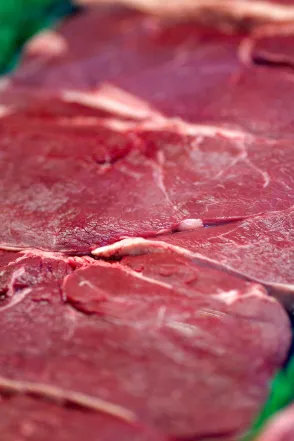
Live and Learn and Lose It!
The second session of my class on losing it (weight, inches or inflammation – or all three!) is underway, and for those who didn’t make it into the class, I want to talk about the main focus of the class: reducing carbohydrate intake. “Low carb” is a hot topic, attracting its supporters (many with their own success stories) and its detractors. Despite its failure, many docs and health advisors still cling firmly to the conventional dietary wisdom recommending My Plate, roughly divided into quarters – grains, vegetables, fruits, and proteins – is the healthiest way to eat. I admit I had to look it up, those ideas are so foreign to me now. Dairy is included in a milk-glass-shaped portion off to the side.
If your waistline expands over your hips in an expanding version of the My Plate shape, do not follow these dietary guidelines! If you’d like your waistline to be a trimmer oval, sitting snugly inside your other body contours, you have two choices.
You can lose weight by counting calories. Most likely you will have to keep counting for the rest of your life while you gradually shrink the number of calories you can eat or boosting up the calories you must burn at exercise in a Sisyphean struggle against nature. The problem with calorie counting has always been that restricting energy (calories) gradually lowers your metabolic rate so the calorie quota to maintain your reduced weight shrinks over time. Often just as your waistline starts expanding. While calories are not to be completely ignored, focus on calories in vs. calories out has dominated the health and weight loss approach for the last forty to fifty years. We don’t need to look far to see that the predominant wisdom has not been effective in achieving the results we would desire.
Your second option is to learn about macronutrients and their different effects on your metabolism. While we all have some passing familiarity with the concept of vitamins (micronutrients) affecting our health, we are currently learning more about macronutrients and their effect on our health, especially our weight and metabolism. The macronutrient terms are familiar: carbohydrates, protein, and fat. You can manipulate the way we eat from those groups to gain or lose weight, as you choose.
Carbohydrates are the real place to start the journey. Carbs will be your best friend and your worst enemy if you are “sensitive” to carbohydrates, as probably about two-thirds of us are. You are probably sensitive to carbohydrates if one or more of the following descriptions applies to you:
- you crave sweets
- your waist measurement is equal to half or more of your height
- you have experienced hypoglycemia, or “sugar blues”
- you have type 2 diabetes or pre-diabetes
- your triglycerides are over 150
- you can’t skip a meal without feeling badly
- you have lost and regained weight numerous times
Other problems common to this group include high blood pressure, high levels or symptoms of inflammation, non-alcoholic fatty liver disease, high uric acid and high fibrinogen.
If any of these descriptions sound like you, and you’d like to lose some weight, inches or inflammation, I suggest you restrict carbohydrates as your dietary strategy. Your plan is most likely to be successful if you can find a way to do it as a life plan rather than a temporary diet.
Carbohydrates are essentially sugars appearing in many different forms, everything from cotton candy and soda to pies to fruit, breads and pasta, and vegetables from sweet, shelled peas to broccoli and bitter leafy greens. Dairy products made mostly from milk contain carbohydrate sugars, less so in those made from cream. I would agree that many carbohydrates are healthy foods, but for health purposes, the greater their sugar content, the more hazardous they are.
So far no one would disagree with that; where disagreement arises is where we draw the line that separates healthy from not-so-healthy carbohydrates. In my weight loss counseling, I am very serious about restricting unnecessary sugars, so I draw the line not very far off the leafy greens and broccoli end of the spectrum.
The three classes of macronutrients are each absorbed by the body in different ways. In our digestive system, each kind of food is broken into its component parts, and those smaller parts are absorbed into the bloodstream. Let’s start with proteins and fats.
- Proteins are broken down to amino acids, which enter the bloodstream and travel to where they are needed for building or repairing body structures. They show up for the job and they essentially walk right in; the door, so to speak, is always open for them.
- Fats behave in a similar fashion: their smaller component parts (monoglycerides and fatty acids) “diffuse” into cells. Once again, the door is always open for them.
- Amino acids and fatty acids are welcomed as essential components of every single cell in the body, either building muscle and bone structure (proteins) or maintaining the flexibility of every single cell wall and synthesizing important messenger hormones (fats). Somewhat simpliefied, I admit, but essential to life and once absorbed into the blood stream pass easily into cells where they can be used.
The third group is carbohydrates, which are actually non-essential, as compared to essential requirements for proteins and fats. Carbs are used primarily for fuel, but so can proteins and fats be used for fuel. Carbohydrates often contain valuable vitamins, but so do proteins and fats. Umm, fiber? Well, that’s actually a current area of dispute – does fiber do more harm or good to a well-functioning intestinal tract? The jury is still out, believe it or not. So let’s set fiber aside. Considering carbs used for fuel and for vitamins, there are equally good sources from absolutely essential proteins and fats. Which makes carbs kind of… unnecessary!
Our bodies recognize carbs’ usefulness for fuel, but also their potential danger: let’s talk about how carbs are absorbed. Broken down into sugars and transported in the blood as glucose, our body is ever wary about glucose levels. Elevated glucose levels are hazardous, witness the multiple complications possible from diabetes, a disease that includes high levels of blood glucose. So rather than just allowing molecules of glucose to passively diffuse into cells, the body has a protective mechanism, namely, insulin secretion. When you even begin to eat a food rich in carbohydrates – in fact, when you think about eating such a food! – your pancreas begins to release insulin into your bloodstream.
Insulin has two primary actions, both intent on keeping blood levels of glucose from getting two high: insulin transports glucose from the bloodstream into the cell, and once in the cell stores it securely away in the fat storage area of the cell. Insulin stores fat and actually keeps it there: with significant insulin in the bloodstream, those fat stores stay locked up tight and can’t be burned for fuel, even if blood sugar levels start to fall. Only when insulin levels start to fall can fat stores finally, unsecured by insulin, be allowed back out so they can be burned for fuel. Fat is stored when insulin levels are high or rising; fat stores can be burned when insulin levels are low.
Weight loss is not really about weight loss, is it? What we really want to lose is fat, not muscle or bone, so it’s better termed fat loss. And if fat loss requires lower insulin levels, that’s something a weight-focused person would want to achieve. How do you lower insulin levels? You lower sugar in the bloodstream. Which you do by reducing the sugars in the foods you’re eating.
Insulin deserves a whole article concentrating on its actions. If we eat enough carbohydrates to have high levels of insulin – even high normal values, that same insulin can raise blood pressure, contribute to inflammation, cause our kidneys to retain sodium and fluid and elevate blood pressure, enable the feeding and growth of cancer cells, and more. No wonder that Dr. Ron Rosedale refers to insulin as the hormone of aging. Insulin works in opposition to a hormone called leptin, which when working properly, helps us keep a normal weight. High insulin and high body fat stores prevent our body from receiving leptin’s signals.
So a low-carbohydrate way of eating is really designed to lower insulin levels, allowing fat stores to be metabolized for fuel and averting the many problems associated with moderate or high insulin levels.
Implementing a low-carb way of eating can mean a drastic change in eating habits and must include a relatively high-fat selection of foods. So the next article in this series will reassure you, I hope, that you can eat those fat-rich foods and improve your health, not jeopardize it as you may have been told.
So what does one eat on a low-carb diet? First the housecleaning: all breads, pastas, and boxed foods go into deep storage or perhaps the trash. Breakfast cereals are one of the first things I would encourage people to quit: they have little value and probably are harmful even if you’re not trying to lose weight. (The Weston Price cookbook, Nourishing Traditions, describes a great research project where 3 groups of mice were fed either mouse food, breakfast cereal or the box the breakfast cereal came in. The cereal killed them before the cardboard did.)
Breakfast, lunch and dinner become a new MyBetterPlate where most of the space on the plate is filled with green. A full 2/3 of the “real estate” goes to leafy greens – whether it’s sautéed kale, creamed spinach in bone broth, or a big salad – and some non-root vegetables. The remaining third goes to the protein that can include its own fat if you like it. If you’re not big on the fat that comes in pasture-raised meat (I wouldn’t advise eating the fat on conventional meat), then your fat will come from dollops of sour cream, cheese on your salad, olive oil in your dressing, or even (gasp!) a pat of butter on your steak. For more details, please see the Weight Loss Eating Plan on this website and stay tuned for some sample menus.

